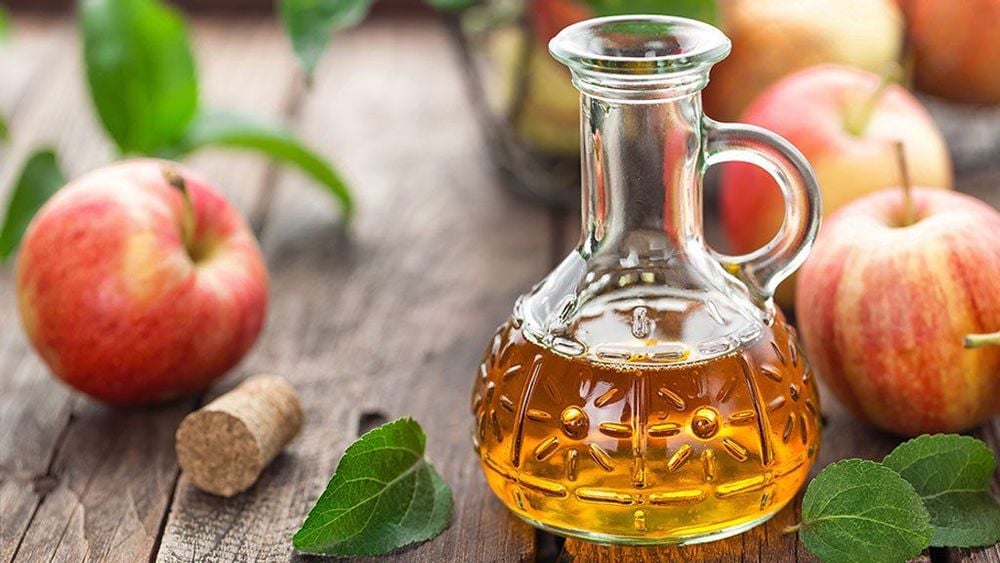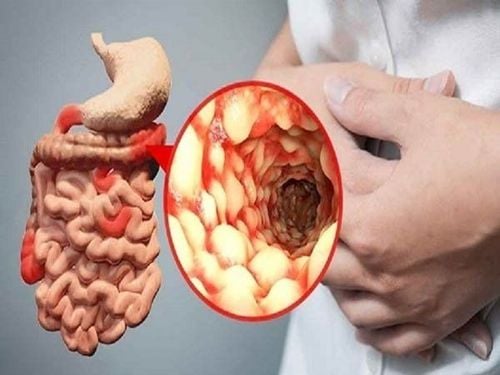This is an automatically translated article.
The article was professionally consulted by Master, Doctor Vu Quoc Anh and Master, Doctor Truong Thanh Tam - Department of Pediatrics - Neonatology - Vinmec Danang International General HospitalAcid reflux is a condition in which stomach acid flows back up into the throat. This is not only a disease in adults but children also often suffer from it.
1. What are the common symptoms of gastroesophageal reflux in children?
Children with acid reflux often vomit, regurgitate milk, in some cases the milk comes out through the nose or mouth. Children are anorexic, fussy for no reason, fuss a lot at night. Children are slow to gain weight, malnourished. In older children, children will often have heartburn and also feel pain in the sternum. Gastroesophageal reflux in children causes children to often cough, wheeze, have pneumonia many times, sometimes children have difficulty breathing, cyanosis, the most dangerous is stop breathing, if not detected in time, it will endanger their life. child's network.
Trắc nghiệm: các chỉ số cần chú ý về sự phát triển thể chất của trẻ
Chiều cao, cân nặng của bé ở từng giai đoạn nên là bao nhiêu là bình thường, bao nhiêu là bất thường? Cùng ThS.BS Ma Văn Thấm điểm lại xem bạn đã nắm được các chỉ số phát triển thể chất của bé chưa nhé!The following content is prepared under supervision of Thạc sĩ, Bác sĩ y khoa, Ma Văn Thấm , Nhi , Phòng khám Đa khoa Quốc tế Vinmec Dương Đông(Phú Quốc)
2. How to handle gastroesophageal reflux in children
Management of GERD in children is dependent on the child's age and severity of symptoms.
With older children, give them small meals to help their stomach gradually adapt to the amount of food at each meal. With bottle-fed babies, always keep the nipple full when feeding to avoid swallowing air. Parents should pay attention when choosing bottle nipples for babies, avoid nipples with large holes for fast milk flow, which can easily cause babies to choke. Adding a small amount of cereal to breast milk or formula can help thicken the milk, helping to prevent stomach acid from backing up into the esophagus. Besides, the breastfeeding position is also very important to help prevent reflux in babies. When breastfeeding, the baby's head should be about 30 degrees above the lying plane. With this position, the esophagus will be higher than the stomach, so when suckling, eating as well as sleeping, milk and food will be limited to reflux into the esophagus.
After the baby is finished feeding, hold the baby up in an upright position so that the milk goes down to the stomach quickly. At this time, parents also pat the baby's back from the top down to help the baby burp. After your baby is burped, slowly lay him down with his head about 30 degrees above the bed.

In addition, parents also need to limit and avoid factors that increase the pressure on the child's abdomen such as: coughing, constipation, or wearing clothes or diapers for the child that are too tight. Avoid leaving children in an environment with a lot of cigarette smoke and kitchen smoke.
Parents regularly massage children to improve respiratory and digestive function, help reduce stomach acid reflux. Massaging the baby's abdomen with olive oil or coconut oil (warm) clockwise will help stimulate the vagus nerve in the brain, one of the nerves involved in the digestive and respiratory systems. In addition, massage also makes the child's body work better. However, parents should be careful not to massage the child right after eating. Besides massage, helping children move through some exercises such as stretching their legs will help reduce problems with the child's digestive system such as abdominal distention and flatulence. Perform the movement by placing the child on his or her back, keeping the child's legs in a bent position, gently moving the child's legs as if riding a bicycle. Parents should note that children should not eat immediately after practicing. In the case that after taking all the above measures but not reducing the gastroesophageal reflux in the child, the parents should take the child to a medical facility to be examined, consulted and treated by a specialist. .
Parents when bringing their children to visit Vinmec International General Hospital will need to inform the doctor about the child's symptoms and conduct a clinical examination. If the child is healthy, growing steadily, and meeting standards, further tests are usually not needed.
In case need further examination, the doctor may order the following techniques and tests:
Ultrasound: this method helps to detect pyloric stenosis in children. Blood and urine tests: Blood and urine tests can help direct or identify the causes of recurrent vomiting and delayed weight gain. Esophageal pH measurement: To measure the acid level in a child's esophagus, the doctor will insert a small tube into the child's esophagus through the mouth or nose. This tube is connected to an acid meter. Your child may need to be hospitalized to prepare for this technique. X-ray: The images obtained after an X-ray can help detect abnormalities in the digestive tract, such as a blockage of the digestive tract. Your child may need to take a contrast medium (barium) before taking an X-ray. Upper gastrointestinal endoscopy: a flexible endoscope (equipped with a camera and light source) is inserted from the mouth into the child's esophagus, stomach, and first colon. During the procedure, your doctor may take tissue samples for testing. For young children, upper gastrointestinal endoscopy is usually done after anesthesia.
3. Cure gastroesophageal reflux with some natural foods and herbs
In addition to the above treatments, there are a number of natural foods and herbs that can also help treat acid reflux.
3.1 Spicy Mint
Mint has long been known as a herb that has a cooling effect on the digestive system and helps relieve symptoms of acid reflux, reduce inflammation and support the functioning of the digestive system. Parents can mix a few drops of peppermint oil with a tablespoon of olive oil to massage the baby's abdomen (can be done twice a day). In addition, nursing mothers can also drink peppermint tea 2-3 times a day.
3.2 Coconut oil
Coconut oil also works to help reduce inflammation caused by acid reflux. The lauric acid in coconut oil helps the baby's digestive system better, similar to the effect of breast milk. Give your child coconut oil by adding about half a tablespoon of extra virgin coconut oil to warm water or baby cereal.
In addition, you can also mix coconut oil and ginger oil to gently massage the baby's abdomen.
3.3 Apple Cider Vinegar
Apple cider vinegar is one of the remedies to help cure acid reflux in children. Mixing some fresh apple cider vinegar with a cup of warm water and giving it to your baby regularly will increase the child's immunity. Besides, you can also add organic honey to apple cider vinegar and warm water, but honey is not recommended for children under 1 year old.

3.4 Chrysanthemums
In addition to reducing abdominal pain, the sedative properties in chrysanthemum also help improve the digestive system. Mix a cup of hot water with half a teaspoon of dried chamomile flowers, let it cool, and then give it to your child to drink daily to help relieve symptoms of acid reflux.
When parents see that a child has acid reflux, parents should closely monitor it to distinguish between physiological or pathological reflux, and seek appropriate treatment.















